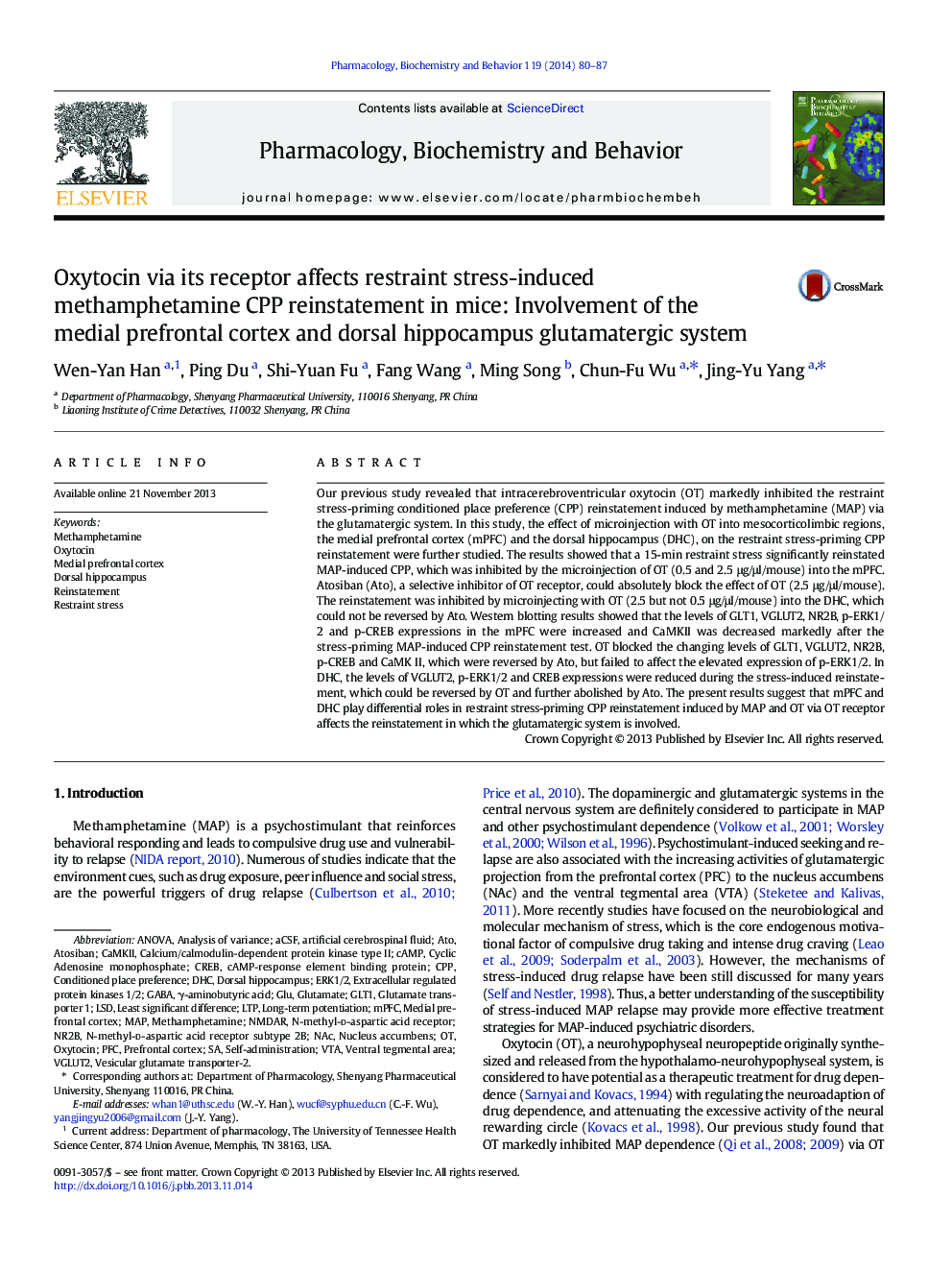| Article ID | Journal | Published Year | Pages | File Type |
|---|---|---|---|---|
| 8351300 | Pharmacology Biochemistry and Behavior | 2014 | 8 Pages |
Abstract
Our previous study revealed that intracerebroventricular oxytocin (OT) markedly inhibited the restraint stress-priming conditioned place preference (CPP) reinstatement induced by methamphetamine (MAP) via the glutamatergic system. In this study, the effect of microinjection with OT into mesocorticolimbic regions, the medial prefrontal cortex (mPFC) and the dorsal hippocampus (DHC), on the restraint stress-priming CPP reinstatement were further studied. The results showed that a 15-min restraint stress significantly reinstated MAP-induced CPP, which was inhibited by the microinjection of OT (0.5 and 2.5 μg/μl/mouse) into the mPFC. Atosiban (Ato), a selective inhibitor of OT receptor, could absolutely block the effect of OT (2.5 μg/μl/mouse). The reinstatement was inhibited by microinjecting with OT (2.5 but not 0.5 μg/μl/mouse) into the DHC, which could not be reversed by Ato. Western blotting results showed that the levels of GLT1, VGLUT2, NR2B, p-ERK1/2 and p-CREB expressions in the mPFC were increased and CaMKII was decreased markedly after the stress-priming MAP-induced CPP reinstatement test. OT blocked the changing levels of GLT1, VGLUT2, NR2B, p-CREB and CaMK II, which were reversed by Ato, but failed to affect the elevated expression of p-ERK1/2. In DHC, the levels of VGLUT2, p-ERK1/2 and CREB expressions were reduced during the stress-induced reinstatement, which could be reversed by OT and further abolished by Ato. The present results suggest that mPFC and DHC play differential roles in restraint stress-priming CPP reinstatement induced by MAP and OT via OT receptor affects the reinstatement in which the glutamatergic system is involved.
Keywords
CaMKIIextracellular regulated protein kinases 1/2Calcium/calmodulin-dependent protein kinase type IINR2BN-methyl-d-aspartic acid receptorNMDARMPFCaCSFDHCCREBLSDATOCPPcAMPERK1/2GLT1AtosibanCyclic adenosine monophosphateγ-aminobutyric acidanalysis of varianceANOVAconditioned place preferencelong-term potentiationLTPleast significant differencemedial prefrontal cortexartificial cerebrospinal fluidMethamphetaminemapdorsal hippocampuscAMP-response element binding proteinGABAGluglutamateglutamate transporter 1
Related Topics
Life Sciences
Biochemistry, Genetics and Molecular Biology
Biochemistry
Authors
Wen-Yan Han, Ping Du, Shi-Yuan Fu, Fang Wang, Ming Song, Chun-Fu Wu, Jing-Yu Yang,
